
A Blue airplane that any pilot or future pilot would love.
The Designer accepts total responsibility for this product, its use and any copyright issues that arise.
How To Make A Paper Airplane
MATERIALS NEEDED:
1. One sheet of paper. Common notebook
paper or stationery should work quite well.
The paper used must be
rectangular in shape with straight, smooth edges and
square (90°) corners. In order to provide the
necessary stiffness and ease of folding the paper's weight should be at least 18 pound but
not more than 28 pound paper. The size of the paper is
less important than the features already discussed. It
may range from about 4x6 inches to about 11x14 inches
(lighter weight paper is more suitable for smaller sheet
sizes).
The "weight" of paper
offers an approximation of how thick and how stiff each
sheet is. The term actually refers to the weight of a
stack of 500 sheets of paper (of a certain size, which I
have forgotten; possibly 17x22 inches?).
2. A smooth, flat work surface.
The work surface should be
at least as large as the sheet of paper and offer a firm,
stable surface to support the paper while it is being
folded.
3. OPTIONAL: One pair of scissors or paper shears.
PROCEDURE:

Step 1
Fold the paper in half lengthways. Crease this fold
well, then reverse it (open up the folded page and
fold it along the same line in the opposite
direction; in other words, turn it inside out) and
crease again.
This fold is the foundation of all that follows and
it is important that it is done properly. Ensure that
the long edges of the paper are carefully aligned so
that they are flush with one another over their whole
length before creasing the fold.
|
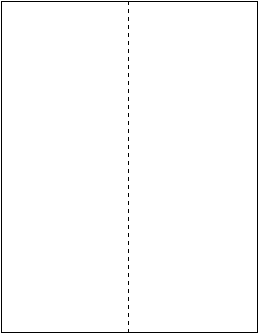
|
Step 2
Fold down the top left corner until the top edge of
the left half of the page is aligned with the first
fold.
|
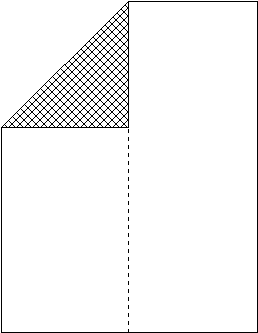
|
Step 3
Fold down the top right corner until the top edge
of the right half of the paper is aligned with the
first fold.
|
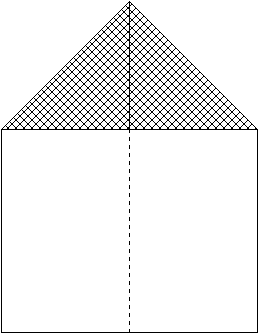
|
Step 4
Fold the point down. Steps two and three form a
"point" at the top of the page. Fold this point down
(toward you) so that the flaps formed in steps two
and three are on the inside of the fold. Make the
fold as high up on the page as possible without
folding or crushing the flaps which are on the inside
of this fold.
|
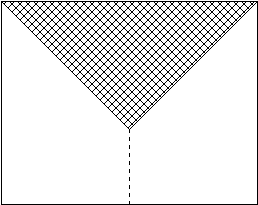
|
Step 5
Fold in half lengthways (along the original fold
from step 1) towards the back so that the folded-down
point is on the outside of the fold.
|
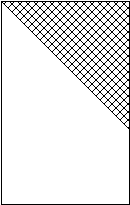
|
Step 6
Tear or cut a notch in the upper corners. If you
have scissors available they will provide an easier
and more attractive way to make the notches. Remove a
square (about ½ inch) from the outer corners.
Make sure you do not cut your notch along the center
fold.
|
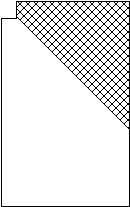
|
Step 7
Open the fold from step five so that the point is
again on top and pointed toward the bottom of the
page. The notched corners will be at the top of the
page.
|
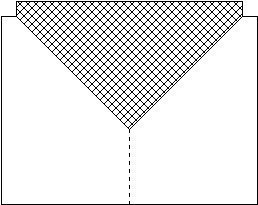
|
Step 8
Fold down the top left corner so that the top edge
of the left half of the page is aligned with the
center fold. This step is very similar to step two.
|
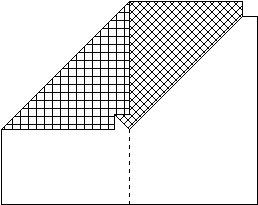
|
Step 9
Fold down the top right corner so that the top edge
of the right half of the page is aligned with the
center fold. This step is very similar to step
three.
|
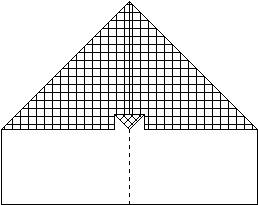
|
Step 10
Fold up the tip of the point to hold the flaps in
place. Steps eight and nine created two "flaps" which
expose the tip of the point (which was created in
steps three and four) through the notches created in
step six. Fold the exposed tip of the point up so
that it covers the edges of the two flaps. This will
hold those flaps in the proper position during
flight.
|
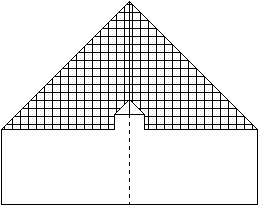
|
Step 11
Fold the right side of the page back along the
center fold so the the flaps and point are exposed on
the outside. This creates two panels folded
back-to-back along the center fold, with the notches
and upturned point on the outside of the fold and the
inside faces of the panels being smooth.
|
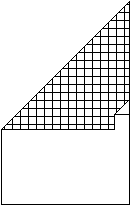
|
Step 12
Rotate the page clockwise 90° so that the
angled portion is to the right and the square end is
to the left.
Fold down the right wing. This fold lifts just the
top panel created in step 11 and folds it "in half"
so that the angled upper edge of the panel is
parallel to and even with the original center fold
(now at the bottom of the page).
|
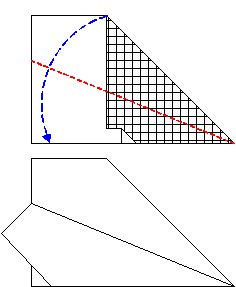
|
Step 13
Flip the page over, left to right so that the fold
created in step 12 is down against the work surface
and the angled edge is at the top and left and the
square end (now possibly with the protuding tail of
the wing created in step 12, depending upon the
length-to-width proportions of the original sheet of
paper) is to the right.
Fold down the left wing. This fold is a mirror image
of the one just completed in step 12. The angled edge
is folded down so that it is parellel to and even
with the original center fold.
|
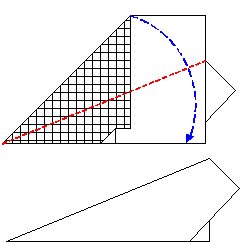
|
Finished Plane
The plane is now finished and ready to fly!
Here is a side view and a top view of the plane after
step 13 is completed and the plane is allowed to
"open up" naturally.
|
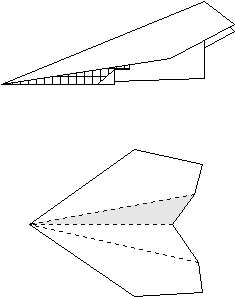
|
OPERATING INSTRUCTIONS:
The original assignment was to write instructions for
"how to make a paper airplane," but now that you've
gone to the trouble of making one it might be useful
to have some intructions regarding how to operate it.
As mentioned above, the finished plane tends to "open
up" a bit when it is released. In order to launch the
plane you must get the plane back to its fully folded
position as it was at the completion of step 13.
Then, allowing the two wings to open upward until
their two smooth top surfaces are parallel to each
other, grasp the base of the plane between your thumb
and forefinger at about the center point along the
length of the first center fold. If you used an
8½x11 inch page this will probably be about
where the turned-up tip of the point holds the wing
flaps in place.This grip will hold the center of the
plane together so that the plane will have a "T"
shape when viewed head-on from the tip - the wings
will be flat and level with the ground and the
central base of the plane will extend downward
perpendicular to the wings.
| CAUTION: Never launch your plane (or any other
object) toward a person or animal,
or even fragile objects. Although it is just a
single sheet of paper and may seem relatively
harmless a paper airplane could damage a
person's eye or cause other painful injuries.
|
To launch the plane select an area with few
obstructions, either indoors or outdoors (unless it is
very windy). An especially nice place to launch paper
planes from is a second- or third-floor balcony - if
you don't mind going down and up the stairs to
retrieve the plane after each flight. The plane
should be launched, point-first (with the narrow,
pointed tip toward the front; the direction of travel
will be approximately parallel with the original
center fold of the plane which is now at its bottom),
at a medium speed (it does not perform well when
thrown very hard or fast) at a level or slightly
upward trajectory.
You may experiment with folding the tips of the wings
slightly upward or downward or with cutting the tail
of the plane off entirely a short distance behind the
folded-up tip of the point on its base. It will still
perform fairly well after a number of these
modifications, but I find that I am most pleased with
its performance when folded just as described in the
13 steps above.
|
|
 A Blue airplane that any pilot or future pilot would love.
A Blue airplane that any pilot or future pilot would love.













